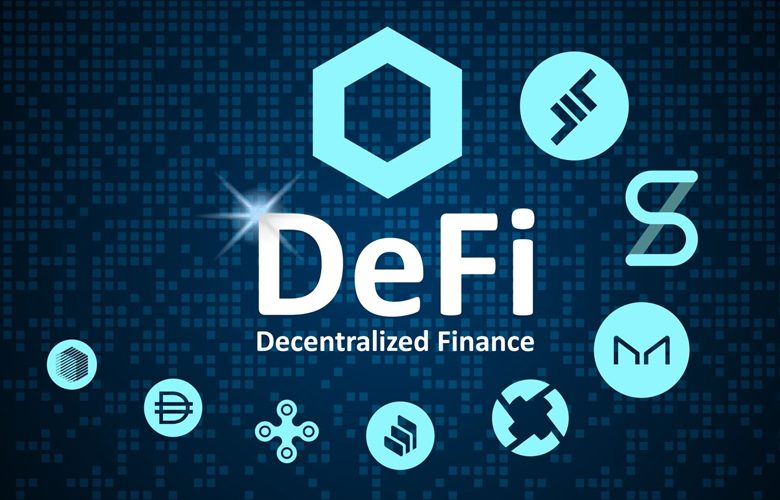Decentralized Finance (DeFi) – Transforming The Financial Ecosystem

Decentralized finance, commonly known as DeFi, is revolutionizing the way people interact with financial services. DeFi leverages blockchain technology to create a permissionless, transparent, and open financial system that removes intermediaries such as banks and other traditional financial institutions. This article will provide an overview of DeFi platforms and applications, explore lending and borrowing in DeFi, and discuss yield farming and liquidity provision. We will also examine real-world examples to better understand the DeFi ecosystem’s impact.
DeFi Platforms and Applications
The DeFi ecosystem is built on top of various blockchain platforms, with Ethereum being the most prominent. Ethereum’s smart contract capabilities have facilitated the development of a wide range of DeFi applications, including decentralized exchanges (DEXes), lending and borrowing platforms, and asset management tools. Other notable DeFi platforms include Binance Smart Chain, Solana, Cardano, and Polkadot.
Some popular DeFi applications include:
1. Uniswap (Ethereum) – A decentralized exchange that allows users to trade cryptocurrencies without a central authority.
2. Aave (Ethereum) – A decentralized lending and borrowing platform that enables users to earn interest on their deposits and borrow assets.
3. PancakeSwap (Binance Smart Chain) – A decentralized exchange similar to Uniswap but built on the Binance Smart Chain, featuring lower fees and faster transactions.
4. Yearn Finance (Ethereum) – An automated yield aggregator that maximizes returns by reallocating users’ deposited funds across various DeFi protocols.
5. Compound (Ethereum) – A decentralized lending and borrowing platform where users can earn interest or borrow against their assets.
Lending and Borrowing in DeFi
DeFi lending and borrowing platforms have gained significant popularity in recent years, offering users the opportunity to earn passive income on their crypto holdings. Users can deposit their digital assets into smart contracts, which act as pools of funds for others to borrow. In return, depositors earn interest on their assets, paid in the form of the platform’s native tokens or the deposited assets themselves.
Borrowers, on the other hand, can access these funds by providing collateral, which is usually over-collateralized to mitigate the risk of price fluctuations. The borrowing process is trustless and does not require credit checks, as the smart contracts enforce the loan agreements automatically.
Real-World Example: Aave
Aave is a leading DeFi lending and borrowing platform, allowing users to deposit and borrow over 20 different cryptocurrencies. The platform uses a variable interest rate model, adjusting rates based on supply and demand. Users can also stake the platform’s native token, AAVE, to earn additional rewards and participate in governance decisions.
Yield Farming and Liquidity Provision
Yield farming, also known as liquidity mining, is a popular DeFi strategy that involves providing liquidity to DeFi platforms in exchange for rewards. Liquidity providers (LPs) deposit their assets into liquidity pools, which are used by decentralized exchanges for trading purposes. In return, LPs earn a share of the trading fees generated by the platform, as well as additional rewards in the form of the platform’s native tokens.
Real-World Example: Uniswap
Uniswap is a prominent decentralized exchange that allows users to provide liquidity by depositing equal values of two tokens into a liquidity pool. When traders use the platform, they pay a 0.3% fee, which is distributed among the LPs in proportion to their share of the pool. Additionally, LPs receive UNI tokens as an extra incentive for their contribution.
Key Takeaways:
1. Decentralized finance (DeFi) aims to create a permission-less transparent, and open financial system by leveraging blockchain technology and eliminating intermediaries such as banks and other traditional financial institutions.
2. Ethereum is the leading DeFi platform, with numerous DeFi applications built on its smart contract capabilities, including decentralized exchanges (DEXes), lending and borrowing platforms, and asset management tools. Other notable DeFi platforms include Binance Smart Chain, Solana, Cardano, and Polkadot.
3. DeFi lending and borrowing platforms, such as Aave and Compound, offer users the opportunity to earn passive income on their crypto holdings by depositing assets into smart contracts. Borrowers can access these funds by providing collateral, typically over-collateralized, to mitigate the risk of price fluctuations.
4. Yield farming and liquidity provision involve users depositing assets into liquidity pools on DeFi platforms, such as Uniswap and PancakeSwap, in exchange for a share of the trading fees generated by the platform and additional rewards in the form of the platform’s native tokens.
5. DeFi is transforming the financial ecosystem by providing users with increased control over their assets, permissionless access to financial services, and the potential for higher returns on investments. However, it is crucial to consider the risks associated with the DeFi ecosystem, such as smart contract vulnerabilities and market volatility.
In conclusion, decentralized finance is reshaping the financial landscape by offering innovative solutions to traditional financial services. The DeFi ecosystem’s rapid growth and increasing adoption demonstrate the potential for a more inclusive, transparent, and efficient financial system. As DeFi continues to evolve, it is essential for users to stay informed about the latest developments, understand the risks, and make informed decisions when participating in the space.



